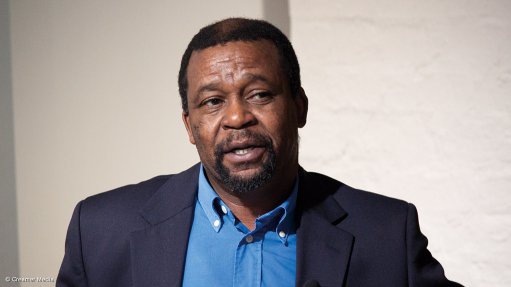Into the Mind of the Safety Leader
This article has been supplied by the author and has not been written or solicited by Creamer Media. It may be available only for a limited time on this website.
Safety expert sheds light on what makes an organisational safety leader
By Lani van der Merwe, Senior Consultant at OIM Consulting
Certain behaviours and characteristics are thought to be the hallmarks of a great organisational leader, such as being proactive and collaborative; having vision and good communication skills; while positively influencing the mindset of those they work with, driving behaviour change.
In the context of risk management, safety leadership refers specifically to those who lead and nurture safety behaviours within an organisation – but Lani van der Merwe, Senior Consultant at OIM Consulting, believes that the same leadership qualities still hold true.
“While a good safety leader does not necessarily have to occupy a management or senior leadership role – they could be foremen, superintendents or even more experienced workers – they should still embody the qualities of a good leader if they are to be effective,” she says.
We sat down with Lani to hear her views on how companies can create a strong organisational safety culture, through better understanding the role of the safety leader.
What is a safety leader?
A safety leader can be anyone in an organisation who consistently exhibits personal safety behaviours and inspires others to do the same. They are not necessarily tasked with ensuring compliance but naturally gravitate towards this role.
A safety leader differs from a safety manager in that the latter typically acts in an official capacity. While both are invested in organisational safety and thus influential in their own right, a safety manager or officer primarily ensures compliance with rules, regulations and occupational safety, health and environmental protocols.
A safety leader, on the other hand, will actively promote a safety culture, inspiring others to do the same. They ensure that the value of safety is engrained within the organisation, proactively identifying ways of improving the working environment and coaching team members in a caring way – before an incident occurs.
They follow safety procedures and protocols and constructively coach to others when they see risky behaviour. Instead of commanding or assigning blame when procedures are not followed, they act to create buy-in around the underlying reason or mindset behind a certain safety protocol.
Safety leaders are those who embody the values of an organisation, keeping safety at the centre of everything they do and championing the right behaviour. They look out for their peers and thus lead by example.
How do you identify a safety leader?
Start by looking for those who are already highly compliant with safety procedures and have natural leadership qualities. Safety leaders typically work in an orderly and structured manner, are not easily distracted, and remain calm and controlled in high-pressure situations. They also tend to only be comfortable taking predictable, calculated risks.
They foster employee participation by encouraging behaviours that contribute towards an environment that is conducive to safety. They take responsibility for their safety as well as the safety of others; they’re flexible and adaptable when it comes to changing their behaviour; and they believe in working collaboratively towards a goal.
What is the difference between a safety “cop” and a safety leader?
While both appear to be concerned with safety, there’s a stark difference between the safety leader and the safety cop. A safety leader promotes an environment where employees feel psychologically safe, meaning that they feel comfortable speaking up and voicing their concerns. A safety cop, on the other hand, is more concerned with ‘policing’ behaviour, penalising workers who don’t comply.
A safety copy is focused on identifying individuals who break rules, ‘pouncing’ on infractions and assigning blame when things go wrong, whereas a safety leader will encourage a culture where workers look out for one other, calmly explaining the proper way to perform a function in a way that creates consensus.
And where a safety cop will usually get involved after an accident occurs, the approach of a safety leader is a more proactive one, seeking to avoid or mitigate potential incidents before they occur.
How can an organisation promote the development of safety leaders, creating a strong safety culture?
Safety leadership plays a vital role in developing a strong safety culture, ultimately creating a healthier workplace.
When a company has a strong safety culture, employees are active participants and are highly committed to creating a safe working environment. As mentioned previously, in this environment, workers feel they can speak up about hazards without fear of the consequences. One of my mentors is a retired Senior SHE manager who worked in mining for over 40 years. He maintained that the a vast majority of mining fatalities could be avoided if we coach one another – in a caring manner – to be able to correctly identify the hazards and changes in the environment.
And while organisations – especially those in mining – invest a lot of money in safety, much of this is focused on the technical aspects, rather than on the training and development of essential safety leadership competencies and providing the necessary resources to employees.
At OIM Consulting, we offer a Safety Mindset programme that is rooted in on-the-ground coaching. This coaching component is critical, as our research and experience show that coaching is one of the best-known tools for sustainable, observable, mindset and behavioural change. We find that effective safety coaching leads to individual psychological safety, the formation and learning of new behaviours, and ultimately a high safety performance.
The programme includes 3 - 5 days of theory, which covers modules such as “Developing a Safety Mindset”, “Team Engagement” and “The Safety Leader as Coach”, as well as a 12 - 16-week coaching component that aims to entrench safety mindset and leadership practices. We also present a sustainability framework to help organisational leaders ensure that these practices become embedded in the workforce, long after we leave.
The purpose of the programme is to empower workers with the necessary skillsets, tool sets and mindsets to become safety leaders and thus contribute to the formation of a strong, healthy safety culture. As Steven Covey once said, “Leadership is a choice. Not a position.”
Comments
Announcements
What's On
Subscribe to improve your user experience...
Option 1 (equivalent of R125 a month):
Receive a weekly copy of Creamer Media's Engineering News & Mining Weekly magazine
(print copy for those in South Africa and e-magazine for those outside of South Africa)
Receive daily email newsletters
Access to full search results
Access archive of magazine back copies
Access to Projects in Progress
Access to ONE Research Report of your choice in PDF format
Option 2 (equivalent of R375 a month):
All benefits from Option 1
PLUS
Access to Creamer Media's Research Channel Africa for ALL Research Reports, in PDF format, on various industrial and mining sectors
including Electricity; Water; Energy Transition; Hydrogen; Roads, Rail and Ports; Coal; Gold; Platinum; Battery Metals; etc.
Already a subscriber?
Forgotten your password?
Receive weekly copy of Creamer Media's Engineering News & Mining Weekly magazine (print copy for those in South Africa and e-magazine for those outside of South Africa)
➕
Recieve daily email newsletters
➕
Access to full search results
➕
Access archive of magazine back copies
➕
Access to Projects in Progress
➕
Access to ONE Research Report of your choice in PDF format
RESEARCH CHANNEL AFRICA
R4500 (equivalent of R375 a month)
SUBSCRIBEAll benefits from Option 1
➕
Access to Creamer Media's Research Channel Africa for ALL Research Reports on various industrial and mining sectors, in PDF format, including on:
Electricity
➕
Water
➕
Energy Transition
➕
Hydrogen
➕
Roads, Rail and Ports
➕
Coal
➕
Gold
➕
Platinum
➕
Battery Metals
➕
etc.
Receive all benefits from Option 1 or Option 2 delivered to numerous people at your company
➕
Multiple User names and Passwords for simultaneous log-ins
➕
Intranet integration access to all in your organisation


















